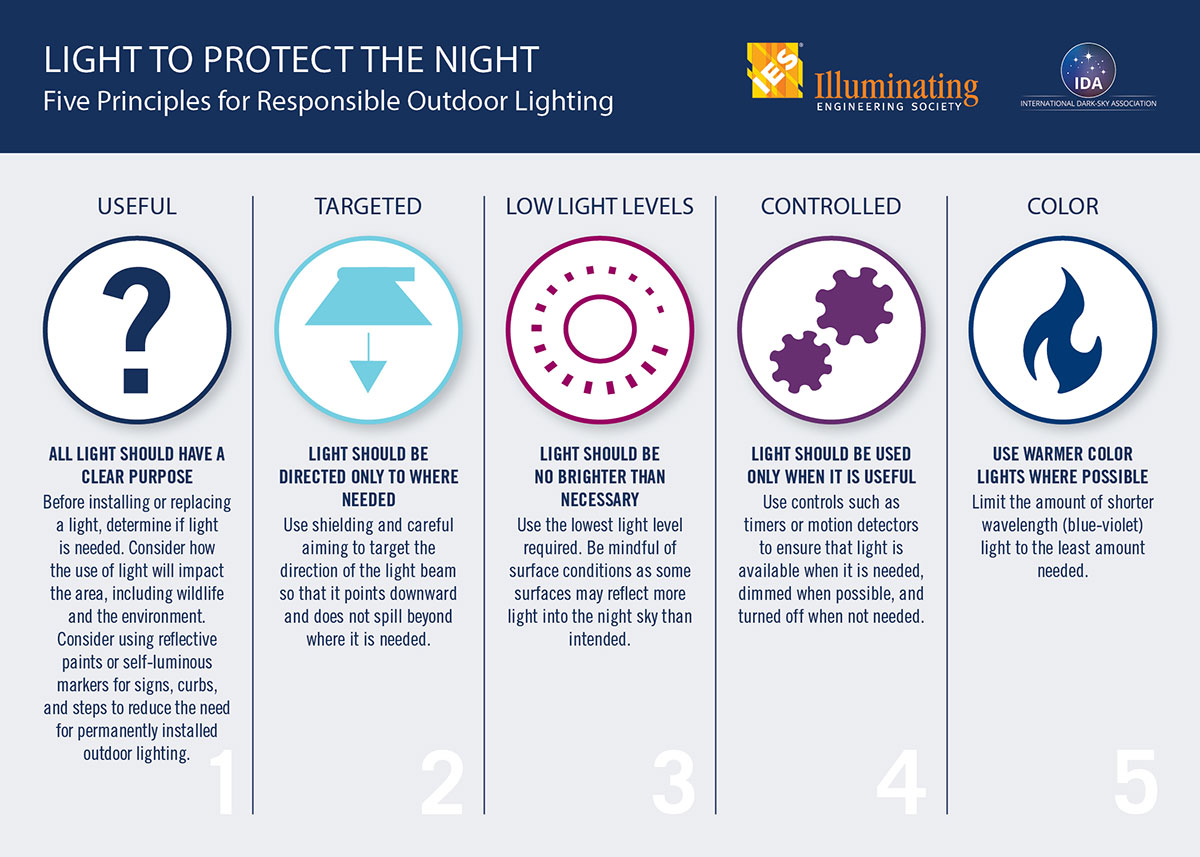IDA and IES announce strategic collaboration to advance quality lighting to reduce light pollution

(New York, April 16, 2020) — The International Dark-Sky Association (IDA) and the Illuminating Engineering Society (IES) announce a strategic collaboration to address the global issue of light pollution that negatively affects our environment and the human condition.
The Boards of Directors of IDA and IES have unanimously adopted Five Principles for Responsible Outdoor Lighting. By joining forces, IDA and IES seek to guide the outdoor lighting industry in the U.S. and beyond to be more socially and environmentally responsible.
“The Five Principles for Responsible Outdoor Lighting that unite our organizations are based on simple ideas; limit light at night to where and when it is needed, don’t overlight, and be sensitive to environmental concerns,” said Brian Liebel, Director of Standards and Research for the IES. “Following these Principles is not difficult and results in more effective and comfortable lighting installations.”
In recent years, light pollution has increased globally by two percent per year. The indiscriminate use of electric lighting at night leads to at least $3BN in wasted energy in the U.S. alone. This wasted light can harm wildlife, imperil important astronomical research, and can obscure our view of the star-filled sky.
“By following these simple principles, electric lighting at night can be beautiful, healthy, and functional. These principles work together to reduce light pollution, save energy and money, and minimize wildlife disruption,” said Ruskin Hartley, Executive Director of IDA.
Future avenues for engagement between the two organizations include convening experts to advance a new metric to characterize the color quality of outdoor electrical lighting, assessing and updating the Model Lighting Ordinance adopted by IDA and IES in 2011, and working to educate and inform municipalities and individuals about how these principles can be applied to save money and advance quality lighting that protects the night.
Unshielded bright white streetlights spill light onto these building facades – directly into people’s living rooms and bedrooms.
Photo: Public Lighting Authority.
IDA and IES Collaboration
IDA and IES Collaboration

Contacts:
Brienne Musselman, Illuminating Engineering Society
212.248.5000 | bmusselman@ies.org
Ruskin Hartley, International Dark-Sky Association
415.238.1325 | ruskin@darksky.org
ABOUT THE INTERNATIONAL DARK-SKY ASSOCIATION
Our volunteer advocates work in 32 countries on six continents to protect the night from light pollution and celebrate the many benefits of a dark, star-filled sky. Learn more at www.darksky.org
